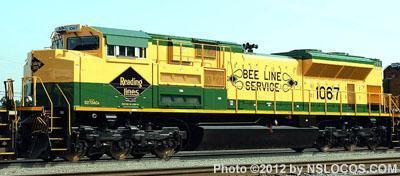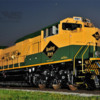Mark
Here is a comparasion of the paint colors on two PRR 44 Ton units.
The front unit is 9331 and is probably in Brunswick Green circa 2006 paint or best guess.
9339 is behind in DGLE the specified color for the 44 ton units circa 1993 paint per the PRR blueprints. Look closure and you can see test panels of modern DGLE painted under the engineers window. It is a test panel of Modern DuPont mix of the original DGLE DuLux color formula. The trucks are painted in gloss black. there is very little difference between black and the DGLE. If you hold your head just right on a sunny day you can see the green in it. FYI DuPont says there is green and yellow in the paint but I don't have the percentages.
To answer your question on what colors were used on engines, I've been digging around for is there were not not a Brunswick green engines by design, "until they were dying and painted what ever and used what was one the shelf". is the best response I have gotten. I would think some passenger train would have been done at some point like the GG's, but just a guess on my part, and that was in later years.
On the red oxide roof's I have seen the 44 tonners done with red roof's. reasons I was given were for lower heat in the cab, which I totally agree. The other reason is dirt, they could paint a roof with plentiful red oxide paint than with the more expensive DGLE.
FYI Chrysler offered a very good looking Metalic DGLE like color on the 2014 Jeep Grand Cherokee. In any condition the car looks black, get it out in the sun and it is dark metallic Green. Good looking paint.
Jamie










